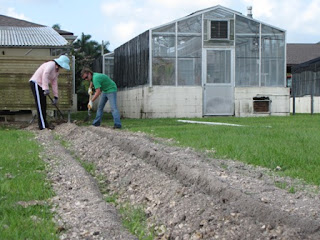
Auspicious beginnings
Everything I needed to know about Kaileigh I learned in her first days among us. Not afforded a formal office early on, her work space was set up in the high traffic counter area of the Water & Soil building. No sweat! Whenever I passed through, there she was, working. And at instances when an office became available (such as mine while on my jaunts) she was there to put the computer to good use – focused on her project and the task at hand. I should also note that she’s a natural born blogger – taking to the REU program’s emphasis on documenting the research experience with gusto.
Team player
Joining the Water Resource team in early June, Kaileigh dedicated her time at TREC to addressing a data discrepancy within in the mountains of information generated by the equipment in the Snapper Creek Project - located just off Snapper Creek in a suburb of Miami-Dade. In addition, she also had the opportunity to get her hands dirty with the rest of our group in our various on-going tasks...

 braving the summer’s worst in C-111 with Isaya,
braving the summer’s worst in C-111 with Isaya,
 contributing to the field plot’s beginnings with Nicki,
contributing to the field plot’s beginnings with Nicki, 
Just before the end of her tenure here, Kaileigh and I collaborated on a short video about her project – Correction of the Analysis of HFP01 Heat Flux Sensor Data Collected during Periods of Rainfall. Highly conceptual, I was somewhat concerned about how we would tackle the subject visually. No sweat! She shared her mid-point presentation with me for brainstorming, she was helpful during pre-production meetings, and once shooting began – always early or after hours and surrounded by hungry mosquitoes - she proved a patient and camera-ready trooper, poised and fearless.


Based in Brazil, Teresa arrived early this year to perfect her work on watershed modeling. Among other things, she is also a talented photographer, a fact which won me over instantly!


















 Isaya downloading Enviroscans at site VM4
Isaya downloading Enviroscans at site VM4 Tina tromping through the mud at site VC1
Tina tromping through the mud at site VC1 




























